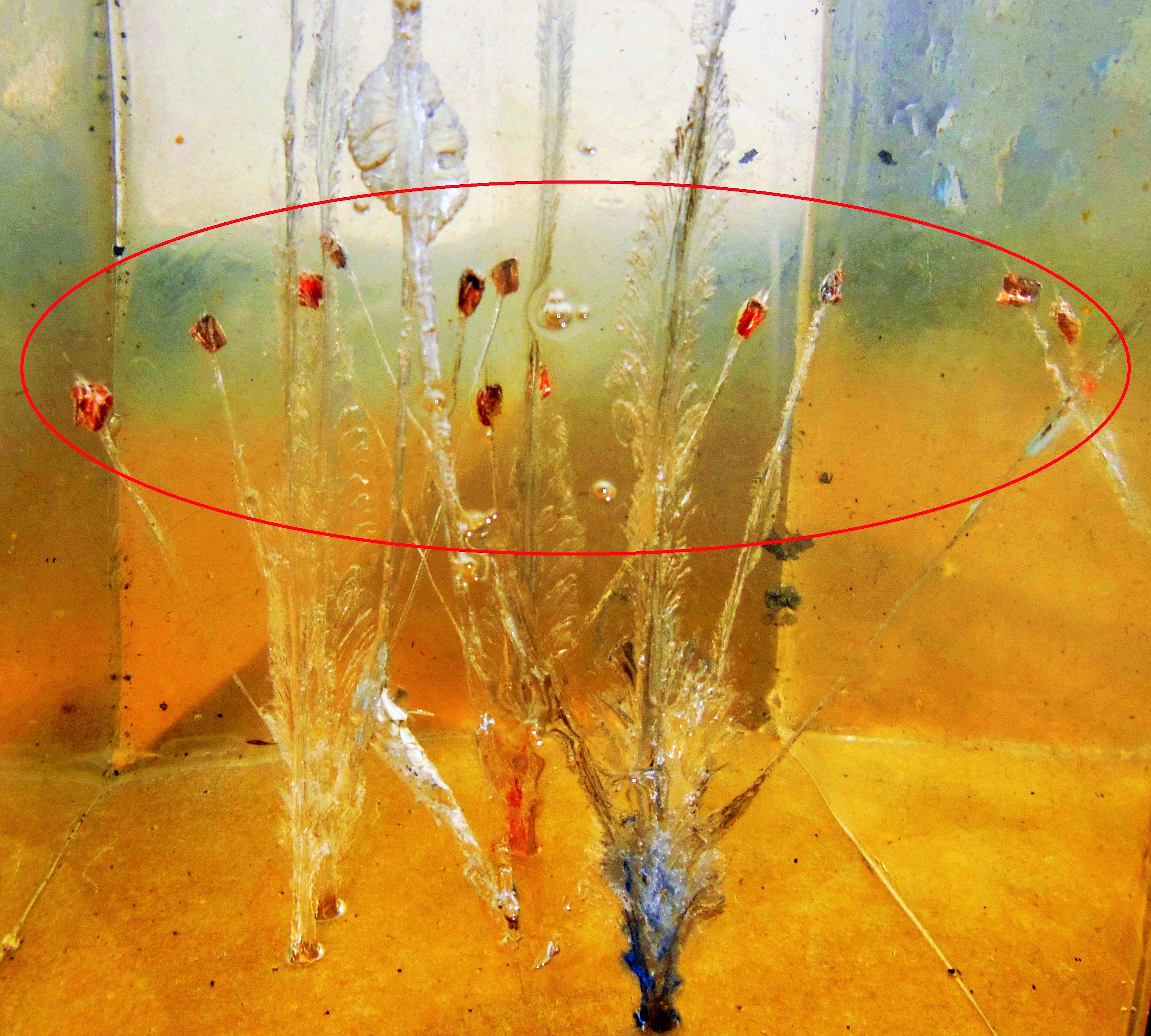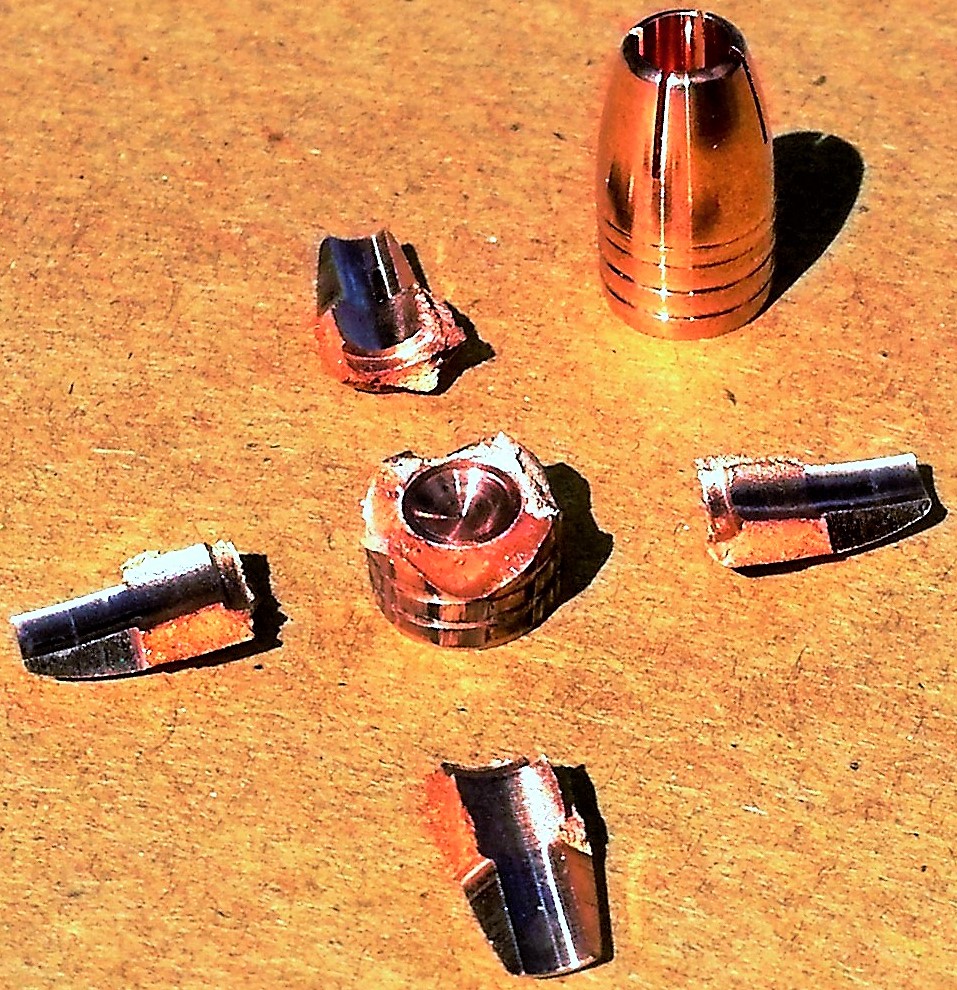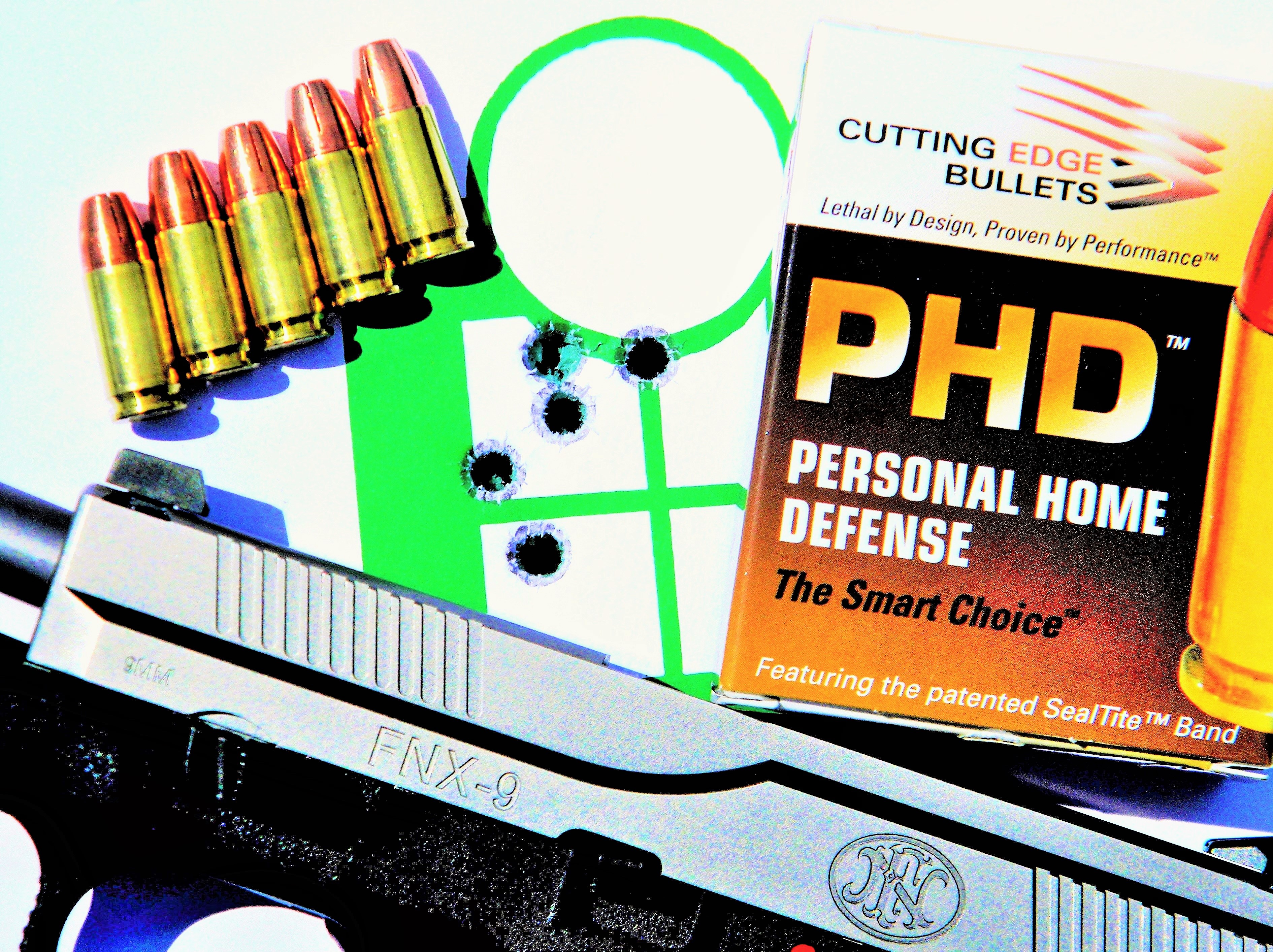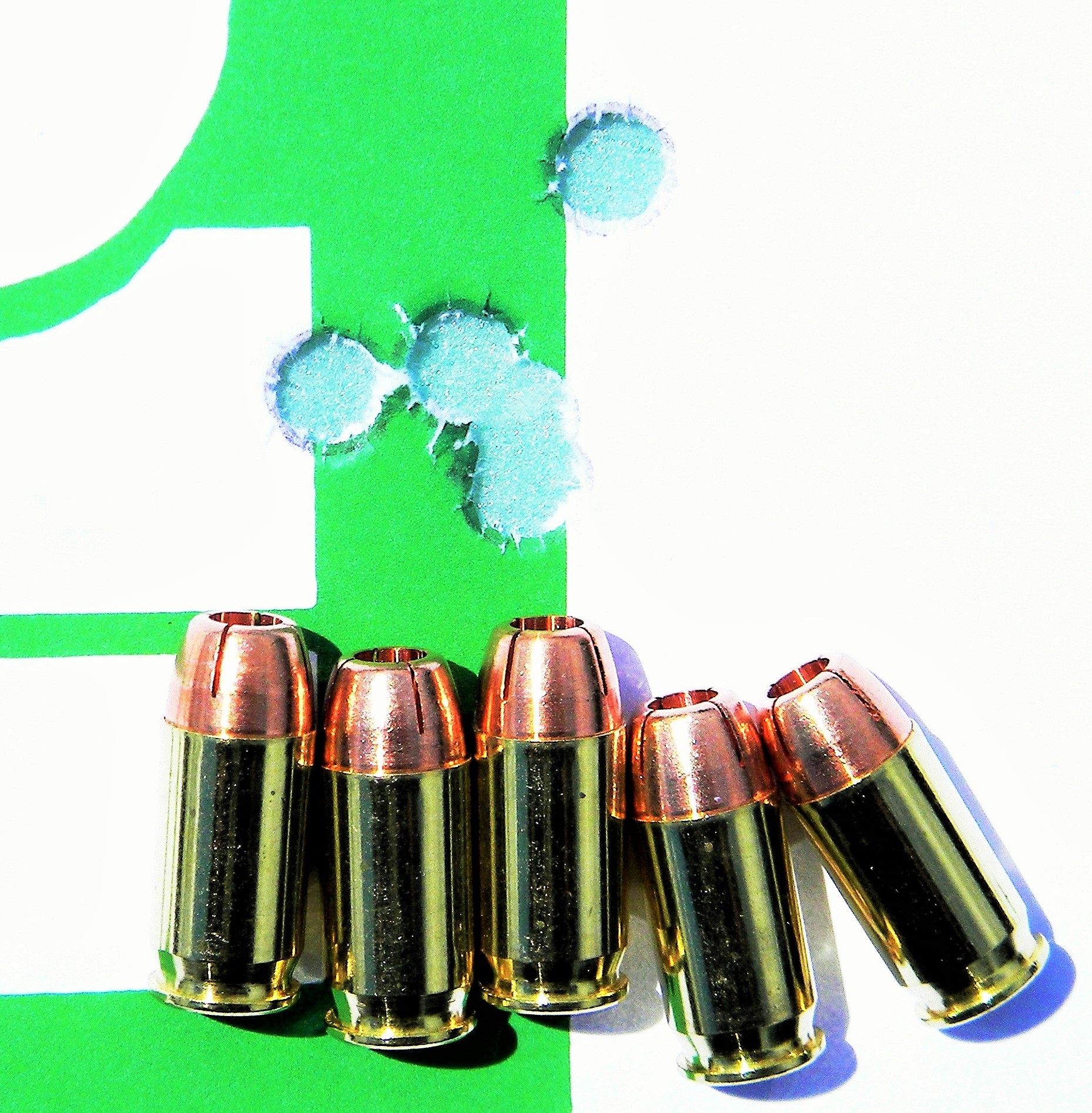
In a self-defense situation, what are the chances most people defending themselves or their families, could accurately place each shot to center of mass? What are the chances that vitals will be hit by a single expanding projectile, if it does even expand? Imagine instead, the impact a single round could have, if after 1 to 2 inches of penetration, the nose was engineered to break off as four sharp blades and radiate out into a star pattern, greatly increasing trauma and the chance that vitals will be damaged?
Meanwhile, the remaining base is a sharp edged, non-deforming projectile that drives forward causing massive disruption to fluid, tissue, or bone. Working together, the aggressive base and the four cutting blades produce extensive trauma and controlled penetration, overwhelming the vitals.
Can such a bullet really exist? It can and does, and my testing has been a real eye-opener. Manufactured by Cutting Edge Bullets (www.cuttingedgebullets.com) since June 2013, the precision lathe turned, lead-free solid copper handgun bullets are called HG Raptors™, and are now also being loaded in a new line of self-defense ammunition called PHD- Personal Home Defense™. Available in .380, 9mm, .40 S&W, and the classic .45 ACP, PHD™ will emerge as the smart choice for defending your family or yourself.
Next Generation Bullets
A video on their website clearly shows the extensive trauma and disruption produced by the blades and the base working together. In all calibers, the four blades will penetrate 4-1/2 to 6 inches plus in Clear Ballistics gel (www.clearballistics.com), which is certified to meet the FBI requirement for projectile testing . Using just 5 inches, the four blades will cumulatively produce a total of 20 inches of a permanent cutting wound.Add to that an additional 12 to 16 inches of base penetration, and you can see that one shot delivers up to 32 to 36” of permanent wounding. In a self-defense
situation, the goal is to stop the threat. Just imagine the impact a single shot could have on an aggressor intent on doing harm to your family or yourself.
How did Cutting Edge Bullets, in a small town in north central Pennsylvania over a year ago come up with such a revolutionary and different functioning handgun projectile? It all started over 5 years ago when approached to produce a far more effective and traumatic rifle...
hunting bullet. The parent company, Cutting Edge Machining, had been making precision parts for the medical and aerospace industries using Swiss CNC lathes.

Because of the very high tolerances to which they could work, they wondered what other products they could make to fill in the occasional slower times. With many in the shop being avid shooters and hunters, an employee one day suggested making precision bullets. The initial efforts focused on super accurate, long range projectiles- the MTH/MTAC™ lines.
A few years later, a gentleman from South Carolina asked Cutting Edge if they would be willing to make big bore rifle bullets in both solid and expanding styles. He had been trying to get others to do this but was not getting a great response, or he was waiting months and months for samples to be run. Dan Smitchko, owner and president, said he would be happy to do this work as he, too, was a keen shooter and hunter. Initially, brass was the preferred material since it has greater lubricity than copper, was easier to cleanly machine, and also cost about a third less than copper.
The expanding bullet was engineered so the hex cavity nose would blow the six blades off after 1.5 to 2” and radiate out in a star pattern
After much trial and error, the optimum design for both a deep penetrating flat point solid and a unique hexagonal hollow cavity expanding bullet was developed and tested. The expanding bullet was engineered so the hex cavity nose would blow the six blades off after 1.5 to 2” and radiate out in a star pattern, while the sharp edged base would continue on for straight-line, almost certain complete penetration. Oftentimes, the blades made it to the far side of the ribcage on a broadside shot with some even exiting.
Game reaction to the shot was immediate and noticeable, often dropping to the shot, or weakly taking a few stops before collapsing. The bullets are now called the Safari Solid™ and Safari Raptor™ lines. Cutting Edge then worked on carrying...
the concept to calibers from .224 to .375 which are called the Raptor™ line. They now also offer high BC lead-free copper rifle bullets for hunting in two lines: Copper Raptors™ and LAZERS™.
When asked to develop a better bullet for the .458 SOCOM pushing a 300-gr at 2,100 fps, it was found that the short, light for caliber bullet lost too much speed to effectively expand well at 200 yards when launched at those modest speeds. More physical assistance was required to aid in getting effective expansion. The next advancement was to cross cut the nose, resulting in four individual blades that would break off and spread out just like the much faster hex cavity bullets did on game. But were they accurate?

Rock River Arms states 1-1/2” groups at 100 yards should be realized. The Cutting Edge 258-gr SOCOM was doing groups that size at 200 yards, and yet still expanding with extensive and traumatic results in gel. This lower velocity success generated immediate plans to do handgun and muzzleloader bullets as well. That knowledge allowed the introduction of the HG Raptor™ and HG Solid™ line the spring of 2013, from .357 to .500 calibers.
HG Raptors™
All of the years of developing/perfecting projectiles which offer extreme trauma AND controlled penetration paid off when developing the new handgun lines. Now muzzle speeds were way down into the 900 to 1,300 fps range. For this application, Cutting Edge Bullets had to go with copper as the ATF classifies brass as “armor piercing” when used in handguns- a definite “no-no.” Copper is less dense than lead, with same size bullets weighing about 83% of a lead projectile, so a 100-gr lead bullet weighs only 83-grs if made out of copper. The addition of an oversized hollow cavity to promote expansion results in an even lighter copper bullet for the same length. Importantly though, the lighter bullets were found to deliver far superior terminal performance.
Cutting Edge Bullets began by measuring the length of heaviest common handgun bullet weights used for hunting and then...
made an HG Raptor™ expanding version that length, already knowing it would far out penetrate the traditional heavier jacketed bullet.

Example: In gel testing, a .40 caliber 150-gr HG Raptor™ penetrated 24 inches, while an expanding 200-gr lead cored bullet only drove 20.5”. Efforts then were directed to HG Raptors™ for personal self-defense decreasing the weight to achieve the FBI desired 12” minimum penetration depth in gel. The result was a .380-75 grain, 9mm-90, .40-120, and a 150 for the .45. Repeated tests proved that expansion performance is consistently repeatable even at impact speeds of less than 900 fps. Note these same bullets are also available as a component for reloading.
Another unique feature of the HG Raptors™ is the Blunt Trauma Base™ that remains to penetrate after the four blades have sheared off. It maintains a sharp edged, non-deforming wadcutter-type
We’ve all seen a canoe travel on a calm lake, barely disturbing the water’s surface. In sharp contrast to this is the image of a barge going up a river. The water is boiling in front and off the sharp square corners because it can’t get out of the way fast enough. Imagine what a barge would look like at 100 mph! Now imagine the Blunt Trauma Base™ traveling through tissue at 1,000 fps. The videos on Cutting Edge’s website clearly show the massive trauma produced by the four penetrating blades and the Blunt Trauma Base™.
Shooting Results
Click for Shooting Results
As the chart shows, PHD™ ammunition delivered very close to factory claimed velocities and proved to be extremely accurate. The smaller handguns were tested at 10 yards and produced 5-shot groups averages from 1.2 to 1.4”. The Ruger LC380 in .380, surprisingly shot an impressive 0.80” best group from the short 3” barrel of the pocket pistol. A 2” Taurus 405 revolver in .40...
S&W shot to point of aim and produced a best group of only 1” with a 1.4” average for five, 5-shot groups. My personal Glock 30S delivered an average of 1.3” with a best group of 1.1” at 10 yards.
The longer barreled, full-sized guns were shot at 25 yards and delivered 1.5 to 1.7” group averages with the FNX-9’s best group of 1.1” using the 90-gr 9 mm HG Raptor™ at 1,353 fps being especially noteworthy. My Sig 229 in .40 S&W had a best group of 1.4” with a 1.7” average for five shot groups at 25 yards. All shooting was done from sandbags using open sights and my aging eyes looking through bifocals.
If knowingly going into a life and death situation, most would grab a high-power rifle or a shotgun loaded with buckshot or slugs. But those weapons can’t be readily carried on your person, kept in your nightstand, or easily managed by an inexperienced shooter. I doubt many would choose a .410 shotgun with the barrel sawed off to only 3”, but that is a popular trend nowadays with snub-nosed revolvers.

While performance on paper silhouette targets is impressive, go online and see how birdshot or multiple, larger projectile loads penetrate in gel. You will not be impressed. The development and proven performance of HG Raptors,™ as loaded by Cutting Edge Bullets in the new PHD- Personal Home Defense™ line of handgun ammunition, appear to be the next generation of highly effective handgun rounds for protecting your family or yourself.